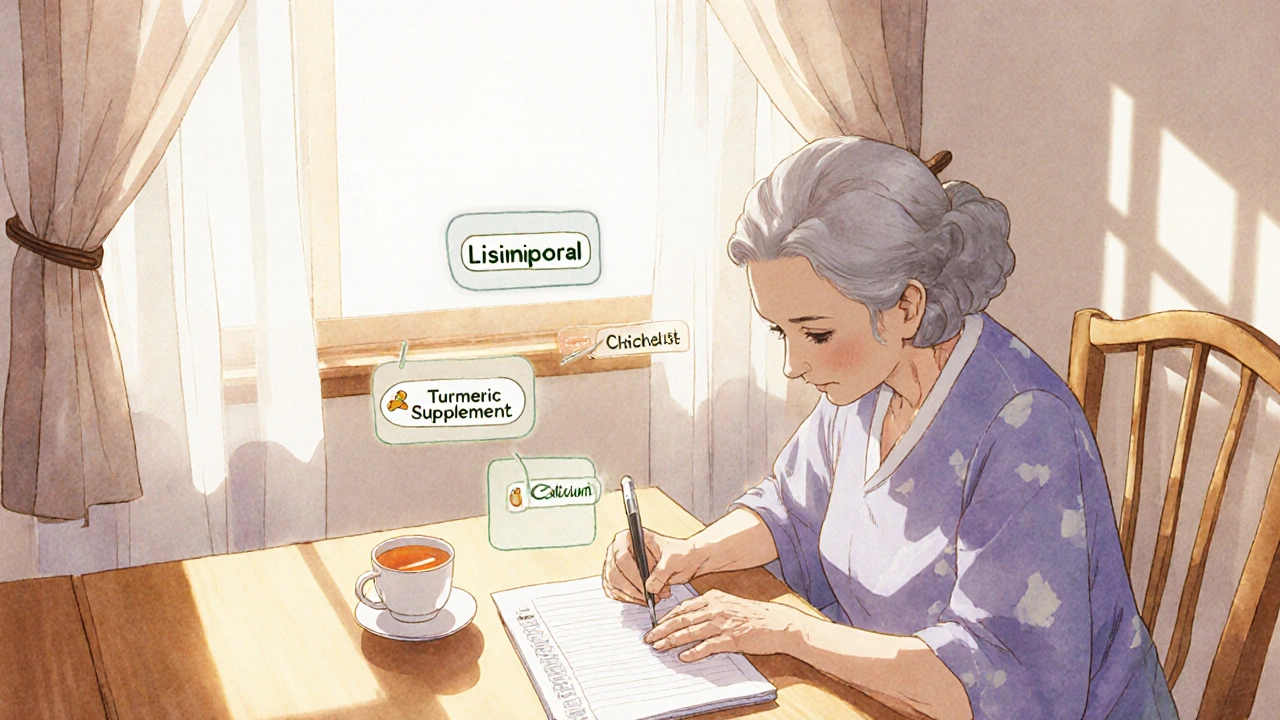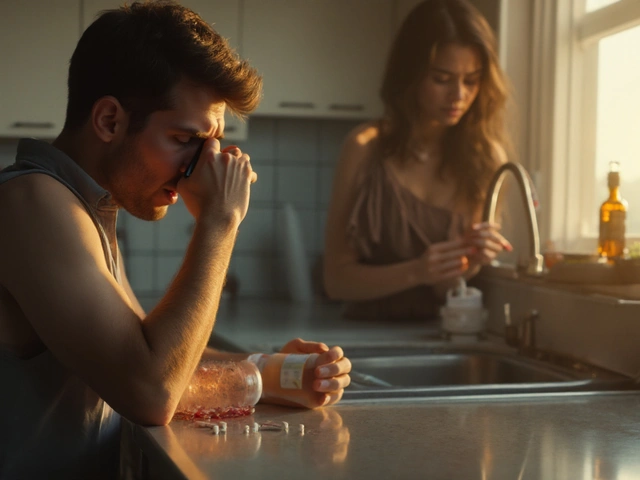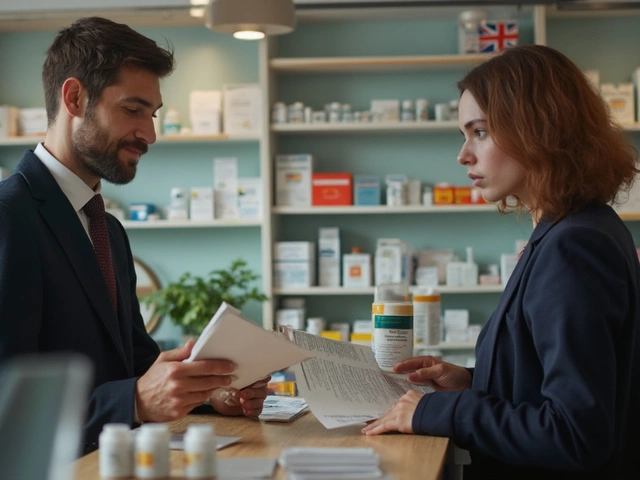Why Managing Multiple Prescriptions Is So Risky
Taking five or more prescriptions at once isn’t uncommon - especially for adults over 65. In fact, 41% of people aged 75 and older are on ten or more medications daily. This isn’t just a numbers game. Every additional pill increases the chance of dangerous drug interactions, side effects that feel like new illnesses, and costly hospital trips. A 2022 study found that fragmented prescription management leads to a 58% higher risk of serious, sometimes fatal, drug conflicts. The problem isn’t your doctor prescribing too much - it’s that no one is looking at the full picture.
Many patients don’t realize that their over-the-counter painkillers, herbal supplements, or even antacids can clash with their heart medication or diabetes pills. One woman in Florida started taking turmeric for joint pain and ended up in the ER with dangerously low blood pressure because it amplified her blood thinner. Another man took calcium supplements with his thyroid med and stopped responding to treatment because the calcium blocked absorption. These aren’t rare cases. They’re predictable - and preventable.
Step 1: Build a Complete Medication List
Before you do anything else, write down every single thing you take - not just prescriptions. That includes vitamins, supplements, herbal remedies, and even OTC drugs like ibuprofen or sleep aids. For each item, note:
- Full name (brand and generic, e.g., "Lisinopril 10mg")
- Dosage (e.g., "Take 1 tablet daily")
- Time of day (e.g., "Take with breakfast")
- Why you’re taking it (e.g., "for high blood pressure")
- Special instructions (e.g., "avoid grapefruit", "take on empty stomach")
Use a notebook, a spreadsheet, or a printable template from your pharmacy. Don’t rely on memory. A 2023 study showed patients who kept written lists were 47% more likely to catch a dangerous interaction before it caused harm.
Step 2: Use One Pharmacy for Everything
Switching between pharmacies is one of the biggest mistakes people make. Each pharmacy only sees part of your history. If you fill your blood pressure med at CVS, your arthritis drug at Walgreens, and your antidepressant at a local clinic pharmacy, none of them have the full picture. That means they can’t warn you about a bad combo.
Research from Health Affairs shows that pharmacists at a single pharmacy identify potential drug interactions with 94% accuracy - compared to just 47% when prescriptions are split. Your pharmacist isn’t just filling bottles; they’re your safety net. Tell them everything you’re taking. Even if they don’t ask, bring your list every time. Most pharmacies now have systems that flag risky combos before they even dispense the pills.
Step 3: Ask About Medication Synchronization
Medication synchronization - or "med sync" - is a simple program where your pharmacy aligns all your refill dates to one day each month. Instead of running out of your blood pressure pill on Tuesday and your cholesterol med on Friday, you pick them all up on the same day. Sounds small? It’s not.
Studies show med sync reduces missed doses by 31% and cuts hospital visits by 22%. It’s not just convenient - it’s life-saving. Ask your pharmacist if they offer it. If they don’t, ask them to start. The American Society of Health-System Pharmacists says any community pharmacy can implement it. You’ll need to be on three or more maintenance medications (not PRN or "as needed" drugs) to qualify. The process takes 2-3 weeks. You’ll get a call when it’s ready.
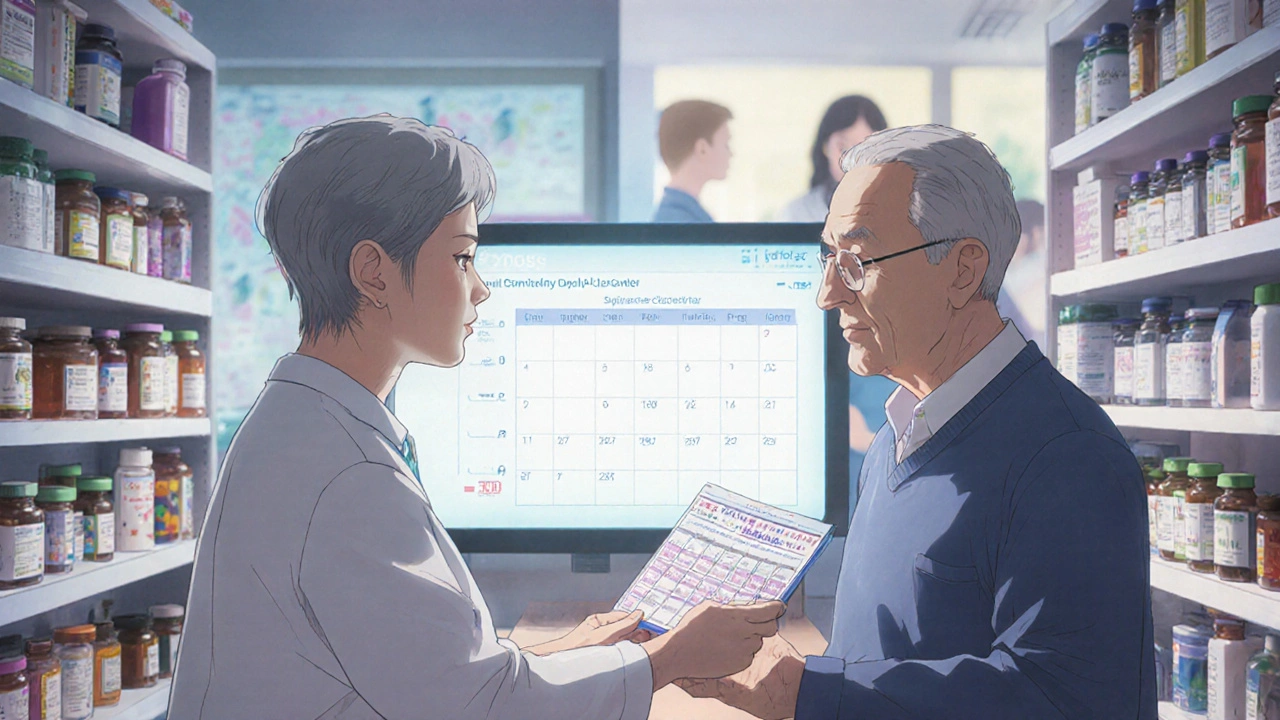
Step 4: Use a Pill Organizer - the Right Way
Pill organizers aren’t just for seniors. Anyone juggling multiple daily meds benefits. But not all organizers work the same. A basic 7-day box with morning and night compartments is better than nothing. But a 7-day AM/PM organizer with alarms - like the Hero Health device - boosts adherence from 62% to 87% in just six months, according to a 2023 study of over 1,200 people.
Here’s how to make it work: Fill your organizer every Sunday evening while watching your favorite TV show. Make it part of your routine. Don’t wait until Monday morning when you’re rushing. Set a phone reminder: "Fill pill box - 7 PM Sunday." A University of Michigan study found that people who did this were 33% more likely to stay on schedule.
If you can’t afford a smart device, use a simple plastic box. But never refill it with pills from different bottles without checking your list. One wrong pill can throw off your whole regimen.
Step 5: Know When Timing Matters
It’s not just what you take - it’s when. Some medications need space between them to work properly.
- Take thyroid medication (like levothyroxine) on an empty stomach, at least 30-60 minutes before breakfast. Calcium, iron, or antacids taken within 4 hours can block absorption.
- Proton pump inhibitors (like omeprazole) work best if taken 30 minutes before a meal - not after.
- Statins (like atorvastatin) are more effective when taken at night.
- NSAIDs (ibuprofen, naproxen) can cause stomach bleeding or kidney damage when mixed with blood thinners or diuretics. Don’t take them daily without checking with your doctor.
Keep a small card in your wallet with these key timing rules. If you’re unsure, ask your pharmacist. They’ll tell you if any of your meds need separation.
Step 6: Review Your Meds Every 6 Months
Medications aren’t set in stone. Conditions change. Side effects build up. Some drugs become unnecessary. That’s why the American Geriatrics Society recommends a full medication review at least twice a year.
Bring your full list to your doctor or pharmacist. Ask: "Is every pill still needed?" "Could any be stopped safely?" "Are there safer alternatives?" This process - called deprescribing - isn’t about cutting pills. It’s about removing what’s no longer helping. A 2023 analysis found that 1 in 5 seniors could safely stop at least one medication without harm.
Don’t stop anything on your own. But do ask. Many patients feel guilty asking to reduce meds - but doctors appreciate it. It shows you’re engaged in your care.
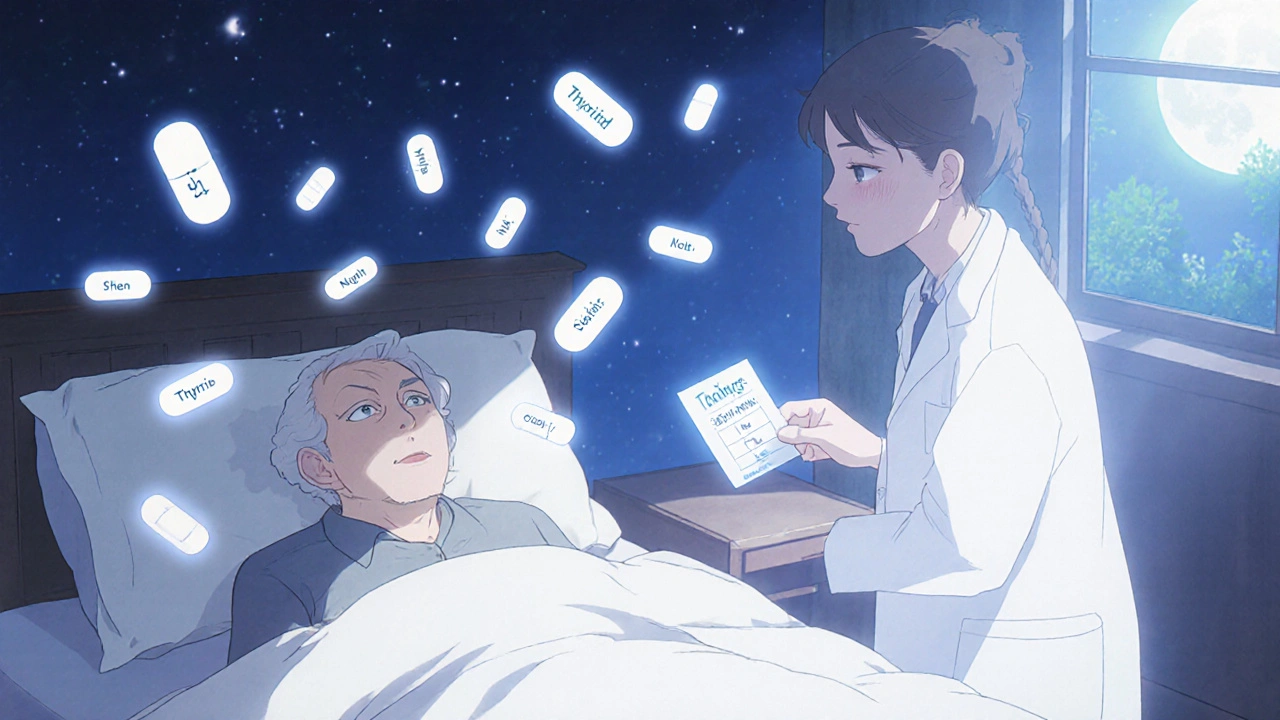
What to Do When You Feel Off
Feeling unusually tired? Dizzy? Nauseous? Confused? Dry mouth? These aren’t just "getting older" symptoms. They’re red flags. Eighty-two percent of dangerous drug interactions cause side effects that patients ignore until it’s too late.
If you notice a new symptom after starting or changing a med, write it down. Note the date and what you took. Call your pharmacist immediately. They can tell you if it’s a known interaction. Don’t wait for your next appointment. A quick call can prevent a hospital trip.
Technology Can Help - But Don’t Rely on It Alone
Apps like Medisafe and MyMeds send reminders and track your meds. In trials, users were 28% more adherent than those using paper logs. But here’s the catch: 62% of adults over 75 don’t use smartphones regularly. If you’re not tech-savvy, apps won’t help.
Don’t skip the human backup. Use the app if it works for you, but still keep a printed list. Still go to one pharmacy. Still talk to your pharmacist. Technology is a tool - not a replacement for human oversight.
Who’s Most at Risk - And Why
Women take 17% more medications than men on average. Rural patients visit four or more providers a year, making coordination nearly impossible. People with diabetes, heart disease, arthritis, and depression are especially vulnerable because each condition brings its own set of drugs.
And it’s not just older adults. Younger people on multiple chronic conditions - like autoimmune diseases or mental health disorders - are also at risk. The problem isn’t age. It’s complexity. The more conditions you manage, the more carefully you need to track your meds.
The Big Picture: Why This Matters
Polypharmacy costs the U.S. healthcare system over $300 billion a year in preventable hospitalizations, ER visits, and lost productivity. But here’s the good news: every dollar spent on coordinated medication management saves $7.20 in avoided care. That’s a 620% return on investment.
It’s not about taking fewer pills. It’s about taking the right pills, the right way, at the right time - with the right support. When done well, coordination doesn’t just prevent danger. It gives you back your energy, your clarity, and your life.
Can I just stop a medication if I think it’s causing side effects?
No. Stopping a medication suddenly can be dangerous - especially for blood pressure, antidepressant, or seizure drugs. If you think a pill is causing problems, write down your symptoms and call your pharmacist or doctor. They can help you decide if it’s safe to adjust the dose or switch to something else. Never stop without professional advice.
Do I need to tell my pharmacist about vitamins and supplements?
Yes. Over 80% of dangerous interactions happen between prescription drugs and supplements people don’t mention. Things like St. John’s wort, garlic pills, ginkgo, or even high-dose vitamin E can interfere with blood thinners, antidepressants, and chemotherapy drugs. Always list everything - even if you think it’s "natural" or "harmless."
What if my doctor and pharmacist disagree about a medication?
That’s not uncommon. Doctors focus on treating conditions; pharmacists focus on drug safety. If there’s a conflict, ask for a joint consultation. Many pharmacies now offer Medication Therapy Management (MTM) sessions where both your doctor and pharmacist can review your list together. Bring your full list. Be ready to ask: "Which option is safest?" You’re the center of this team - your voice matters.
Are there free tools to help me track my meds?
Yes. The CDC offers a free printable medication list you can download and fill out. Many pharmacies also give out simple paper trackers. You can also use a free app like Medisafe or MyTherapy - even if you’re not tech-savvy, you can ask a family member to help set it up. The goal isn’t perfection - it’s awareness. Any system is better than nothing.
How do I know if I’m on too many meds?
There’s no magic number, but if you’re taking five or more daily prescriptions - especially if you’re over 65 - you should have a full review at least once a year. Ask your pharmacist: "Could any of these be combined or stopped?" If you’re feeling more tired, confused, or unsteady than before, that’s a sign your regimen may be too heavy. The goal isn’t to take fewer pills - it’s to take only what truly helps you.

